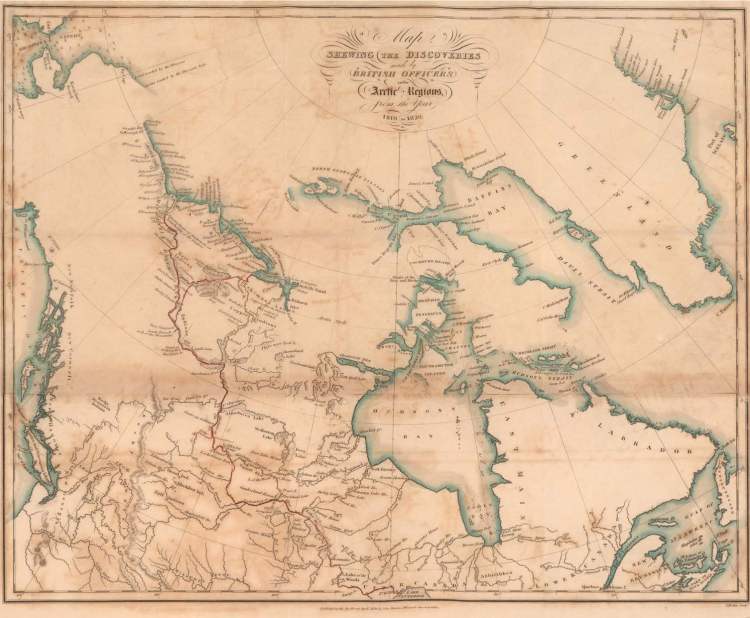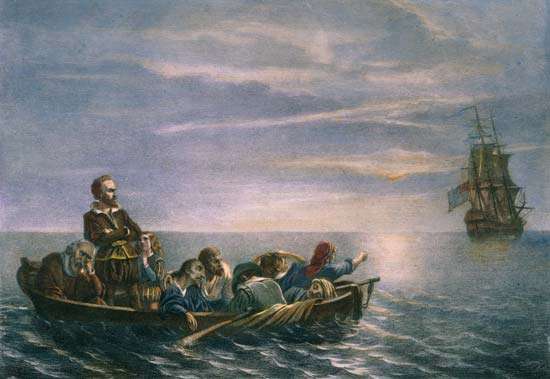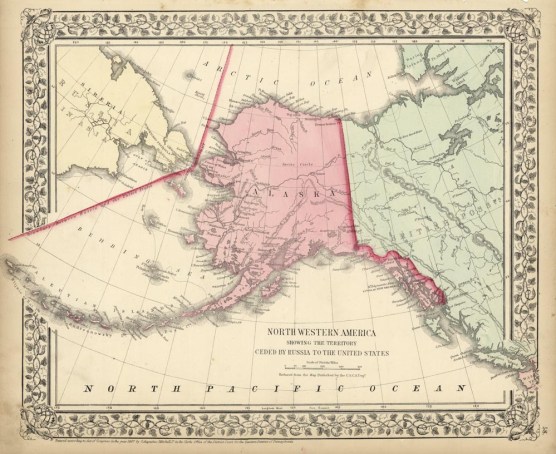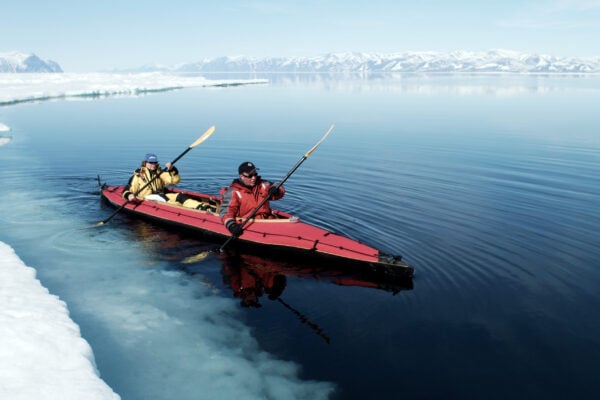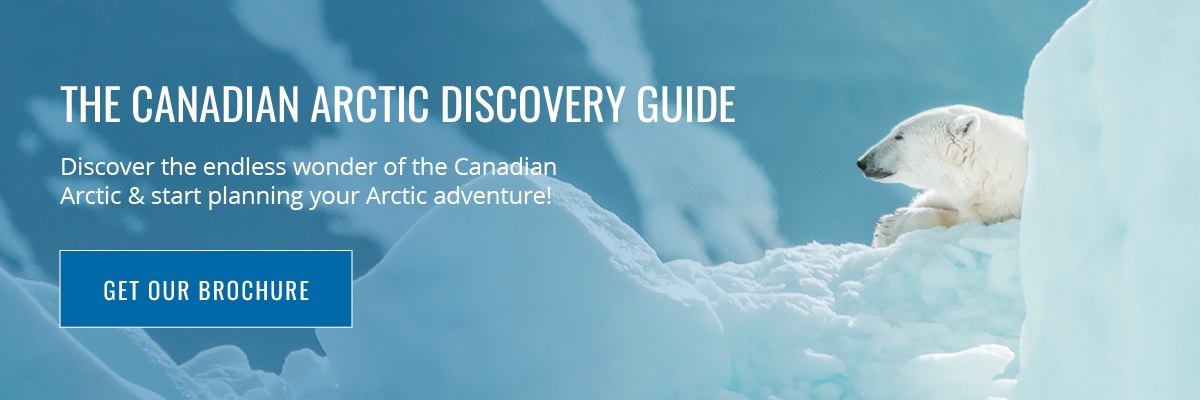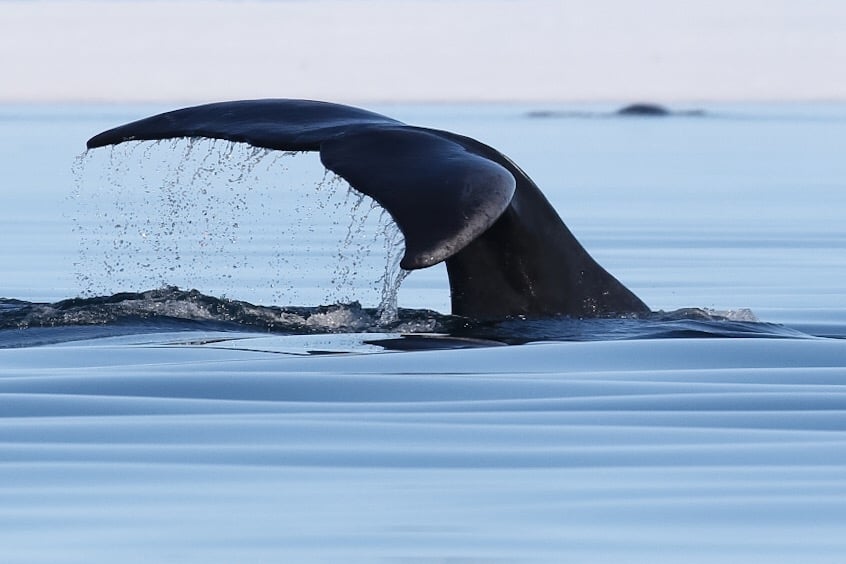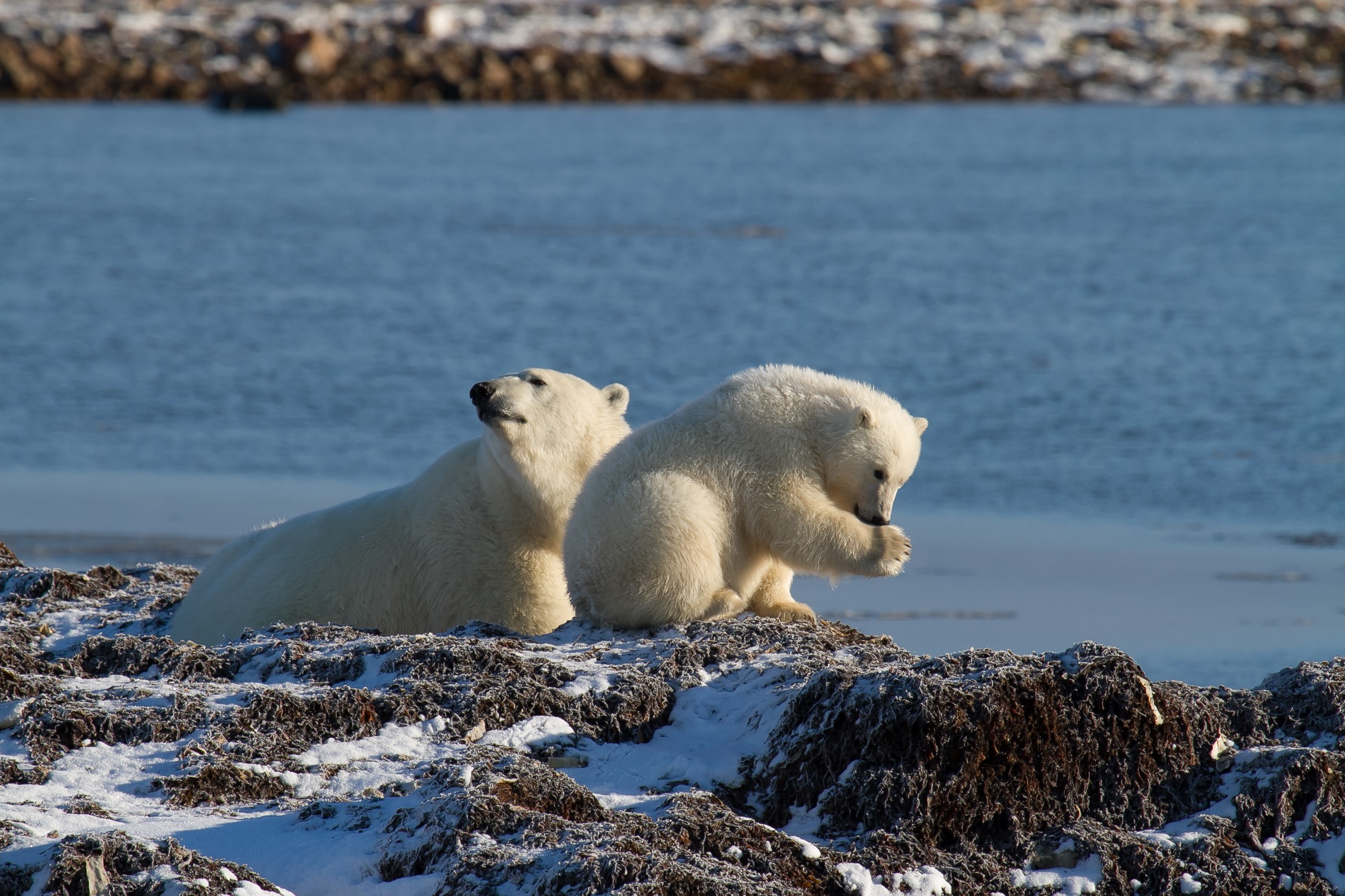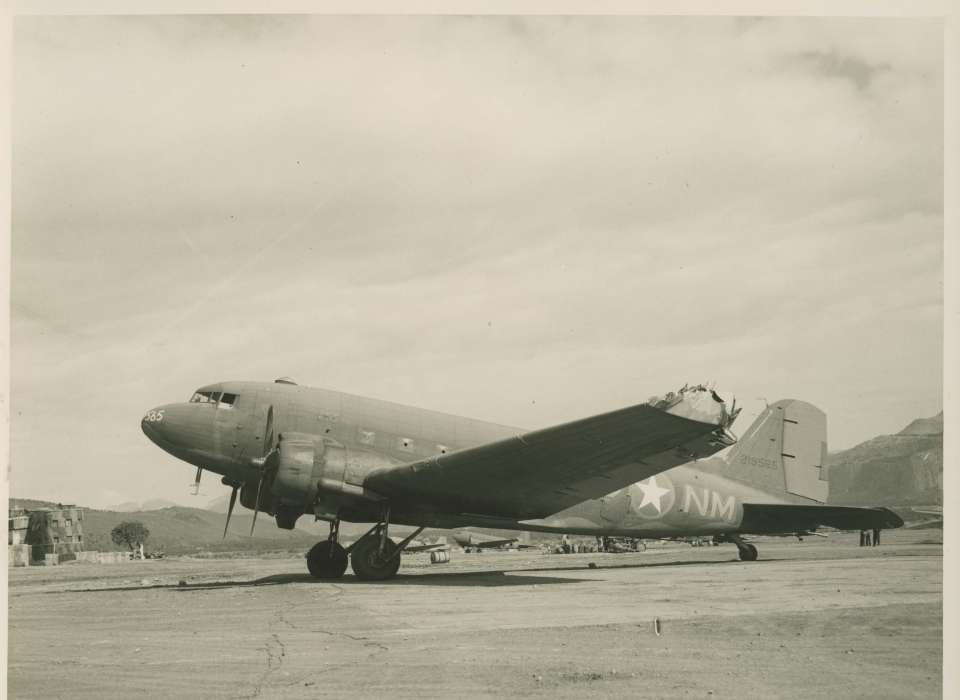The Northwest Passage is one of Canada’s most exciting chapters of discovery, history and exploration. Let's dive into its thrilling history and look at some of the most famous names in Arctic exploration.
- Intro: What Is the Northwest Passage and Why Were Explorers Looking for It?
- Can People Visit the Northwest Passage?
- Early Attempts at the Northwest Passage
- Henry Hudson's Exploration of the North
- British Explorers and the Northwest Passage
- The Second Era of Exploration
- Who Was the First to Travel the Northwest Passage?
- Who Was the First to Sail the Northwest Passage?
- Modern-Day Explorers Return
- Want to Visit the Northwest Passage?
- Experience the Arctic on a Safari
What Is the Northwest Passage?
The Northwest Passage is a sea corridor connecting the Atlantic and Pacific Oceans through Canada’s Arctic Archipelago islands and along the northern-most coast of North America.
Why Were Explorers Looking for the Northwest Passage?
Europeans searched for 300 years to find a viable sea trade route between North America and Asia. Names of some of the most famous adventurers, like Henry Hudson and Sir John Franklin, are etched into the history of the Northwest Passage.
Can People Visit The Northwest Passage?
The fascinating history of the Northwest Passage has sparked an interest in travelers from around the world. Modern-day explorers are drawn to Canada’s High Arctic for the chance to walk in the footsteps of the first Arctic explorers.
Looking to travel to the Northwest Passage? Trust our Arctic experts to give you a guided tour of the breathtaking scenery and wildlife. Find out more about our polar cruises here.

Credit: Map of Northwest Passage
Early Attempts at the Northwest Passage
In the earliest attempts, explorers still believed they could find a passage across the continent. Rene-Robert Cavelier believed he could find a Northwest Passage from the Great Lakes. While exploring the Saint Lawrence River, Jacques Cartier falsely claimed the rapids at present-day Montreal were the last obstacle keeping him from China.
With little knowledge of just how large the continent was, these early explorers may have failed, but they furthered the knowledge that led to its success.
Explorers began to look further north for a route around the continent, not through it. This led explorers toward Baffin Island and the Arctic.
Explorers Martin Frobisher (1576) and John Davis (1585) described Baffin Island as a barren obstacle with ice-blocked passages to the west.
Find out more about Baffin Island and many other key stops along the eastern gateway of the Northwest Passage here.
Henry Hudson's Exploration of the North
Henry Hudson (1611) is recorded as having made four voyages in search of a northern passage through the Arctic to East Asia; the first in 1607 and the last in 1610-11.
While none of his attempts were successful, he discovered two large bodies of water in Canada named for him — the Hudson Strait and the enormous Hudson Bay — as well as the Hudson River in New York.
On his final voyage in 1611, when he wanted to travel further west after wintering in James Bay, his homesick crew mutinied and set him adrift as they sailed back to England.
It’s said that Hudson attempted to keep pace with the ship in his rowboat until the crew grew tired of this guilty presence and let down their sails, leaving Hudson behind the horizon with his son, John, and seven of his crew members. They were never seen again.
British Explorers and the Northwest Passage
The British were becoming frustrated by failing attempts and declared a £20,000 prize to anyone who discovered a northwest passage. This continued to stimulate and encourage future expeditions.
Most of the attempts to find the Passage traveled west, departing from Europe. But there were several attempts from the west coast of North America by explorers like captains James Cook and George Vancouver.
In 1776, the Admiralty in Great Britain dispatched James Cook to explore the west coast for a route. He was ordered to ignore all inlets and rivers until they reached the northern latitude of 65 degrees north.
He traveled to the limits of the Alaskan Peninsula and reached 70 degrees north but came short of finding any such route.
George Vancouver, who had accompanied Cook on his expedition, then led his own trip from 1792 to 1794. He surveyed and mapped the passages and rivers of the Northwest Coast in detail. This confirmed there was no great passage south of Bering Strait.
The Second Era of Exploration
The most famous of all attempts to find the Northwest Passage were Sir John Franklin’s tragic expedition and Sir Robert McClure’s grand success.
In 1845, Sir John Franklin was chosen, despite being 59 years old, to lead a lavishly-equipped expedition to chart the last unknown parts of the Northwest Passage. The two ships in his voyage, HMS Erebus and HMS Terror, became ice-locked in 1846 near King William Island, roughly halfway through the Passage, leaving the crew stranded.
Franklin died in 1847, leaving Francis Crozier in command. In 1848, they abandoned the two ships and tried to escape south by sled across the northern tundra. None survived.
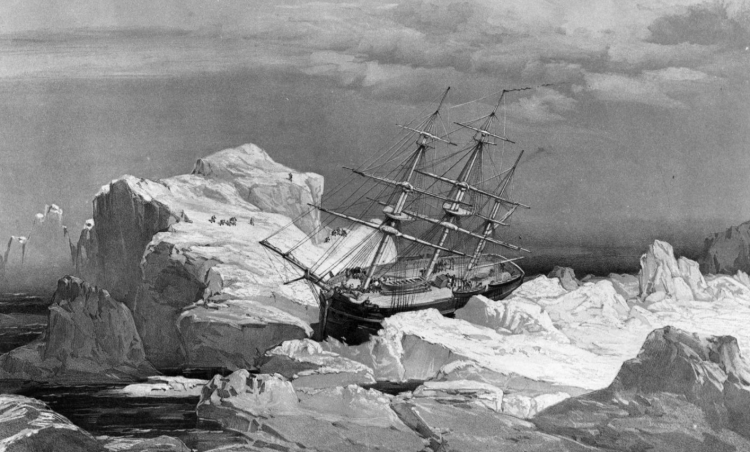
Credit: HMS Investigator
Several searching expeditions were sent out when the ships failed to return to England. One of the attempts was by Sir Robert McClure. He was later credited with being the first to navigate the Northwest Passage.
After returning from the first Franklin search expedition, a new search party was sent in 1850, with McClure in command of the second ship, Investigator. The two boats set out together but soon became separated. They didn’t regain contact for the rest of their trips.
McClure then traveled up the west coast and into the Bering Strait. Unfortunately, the ship became stuck in pack ice in the spring of 1853 and McClure and his crew were rescued by an expedition traveling from the east.
Who Was the First Person to Travel the Northwest Passage?
Irish explorer Sir Robert McClure was the first to travel the entirety of the Northwest Passage. However, much of his journey was completed by traveling over ice rather than water.
After his initial attempt to complete the Northwest Passage in 1853 resulted in his ship becoming icebound, McClure continued his journey by sled and became the first person to transit the entire Northwest Passage.
When McClure returned to England, he was first court-martialed — the penalty for a captain losing his ship. He was then given an honorable acquittal and was knighted and promoted. The British Admiralty awarded McClure and his men the prize for traversing the Northwest Passage.
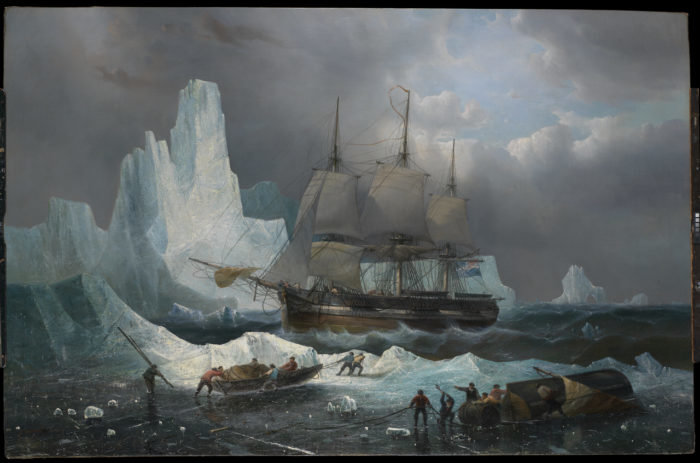
Credit: Exploring by sea and ice
Who Was the First Person to Sail the Northwest Passage?
Norwegian explorer Roald Amundsen was the first to make the journey through the Passage entirely by ship, which he completed in 1905. He was escaping creditors who were seeking to stop the expedition.
Adopting a contrasting approach to the expeditions previously led by Franklin and McClure, who had adhered to the British tradition of exploration with expensive ships that were well-funded with supplies and modern technologies, Roald Amundsen set sail with a small crew of six on a shallow-draft vessel called the Gjøa.
As Amundsen’s expedition traveled past Baffin Island, they harbored off King William Island to take shelter from the winter. They spent two winters (1903-04 and 1904-05) in what is now a community called Gjøa Haven. They learned from the local Netsilik Inuit people how to survive in the Arctic.
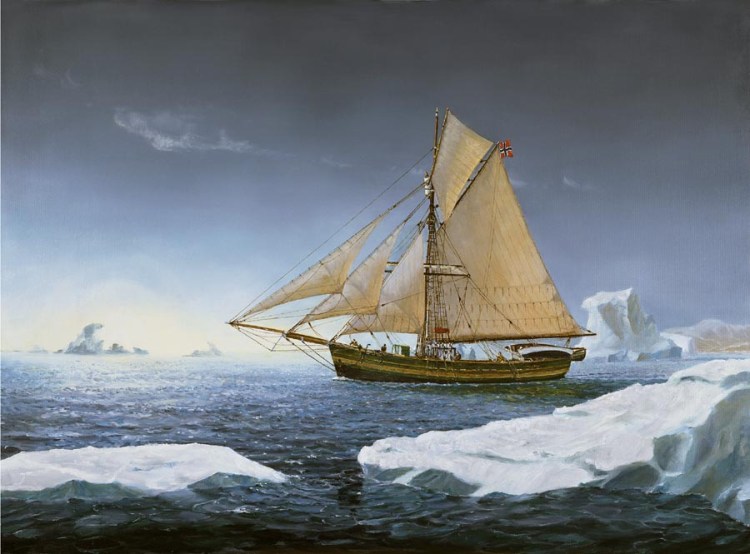
Credit: The ship Gjøa
Leaving Gjøa Haven continued to sail west past Cambridge Bay and Victoria Island until they finally emerged from the Canadian Arctic islands in August 1905. They decided to winter here before they made the final journey back to Norway.
Norway had recently gained independence from Sweden and had a new king, so Roald was excited to inform him of their success. Roald skied 800 km to Eagle City, Alaska. He used a telegraph station to send the news home before heading 800 km back to his crew.
It wasn’t until 1942 that Henry Larsen, a Canadian RCMP officer, became the second to sail the entire passage. Larsen first traveled west to east on a two-year expedition departing from Vancouver in 1940 and arriving in Halifax in 1942.
In 1944, his return trip set the record for traversing the route in a single season. The ship had undergone extensive upgrades and followed a more northerly route partially uncharted at the time.
Modern-Day Explorers Return
The Northwest Passage has an incredible history filled with heroic figures pushing themselves to the limits of survival for the sake of exploration.
Steeped in history and surrounded by breath-taking landscapes, Canada’s High Arctic has become an increasingly popular destination for adventurers, history buffs and travelers seeking the next frontier of travel.
Trips like Narwhal & Polar Bear Safari take you to the floe edge of Eclipse Sound, near the eastern gateway of the Northwest Passage. This region is filled with some of the most iconic wildlife in the Arctic, including migrating narwhal and roaming polar bears.
Want to Visit the Northwest Passage?
Arctic Kingdom excels at private, customizable trips. Get a group together or bring your family and explore the sights and destinations you dream of visiting!
Read our brochure to learn more about the trips and tours we offer or contact us for more information about experiencing this region of Canada’s High Arctic.
Experience the Arctic On a Safari
Get the chance to view elusive Arctic wildlife and experience the majesty of the Arctic on safaris almost year-round. View all Arctic Safaris here.
Ready for adventure? Contact our Arctic Travel Advisors to book.
Are you still curious about the many wonders of the Arctic? Explore more blogs here!


